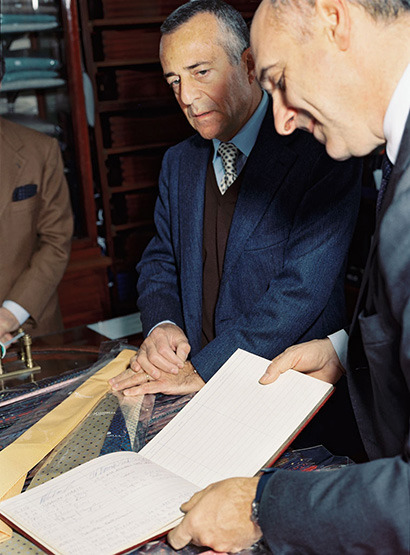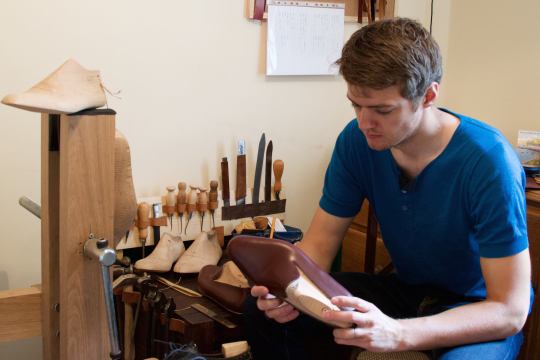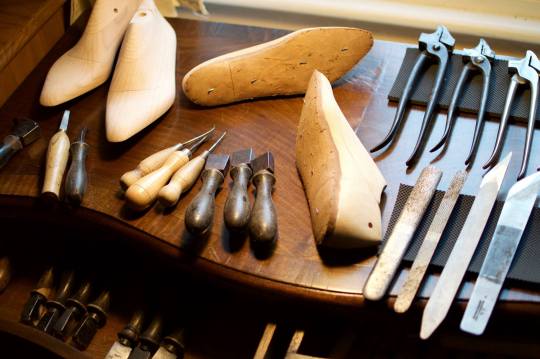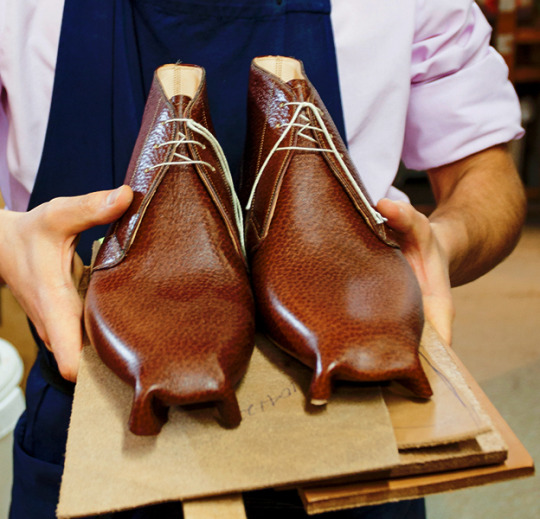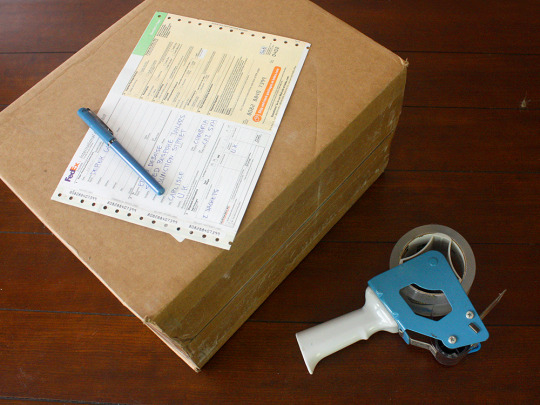
The term bespoke has a lot of marketing cachet nowadays. It’s used to describe anything and everything. There are bespoke salads, crackers, bacon, bicycles, cardboard boxes, and financial services. There’s even a ready-to-wear clothing line called Bespoken.
Most of this is just harmless marketing hype – a way for brands to defend themselves against commodification – but some of it is disconcerting if you care about actual bespoke tailoring. Lots of made-to-measure and made-to-order services these days describe themselves as bespoke, even when they’re not, which makes it difficult for the casual consumer to know exactly what he’s getting.
A couple of weeks ago, Simon Crompton wrote a basic primer on the differences between ready-to-wear, made-to-measure, and bespoke (it’s the start of a longer guide on how to buy tailored clothing). The info here will be nothing new for anyone who’s been interested in custom clothes for a while, but it’s the kind of thing that helps sets parameters for those just getting acquainted.
Ready-to-wear is straightforward. Made according to a pre-drafted pattern, it’s what you pick off-the-rack. Made-to-measure, then, is when you modify that pre-drafted pattern according to the client’s measurements (usually done through a CAD program). And bespoke is when a totally new pattern is drafted for you. One of the biggest differences between MTM and bespoke is that the first has one fitting while the second has three – which theoretically means that bespoke should fit better, but that assumes you’re working with someone who’s highly skilled.
That’s the simple, Intro 101 guide. As soon as you dig a little deeper, however, you’ll find a lot of things break apart.
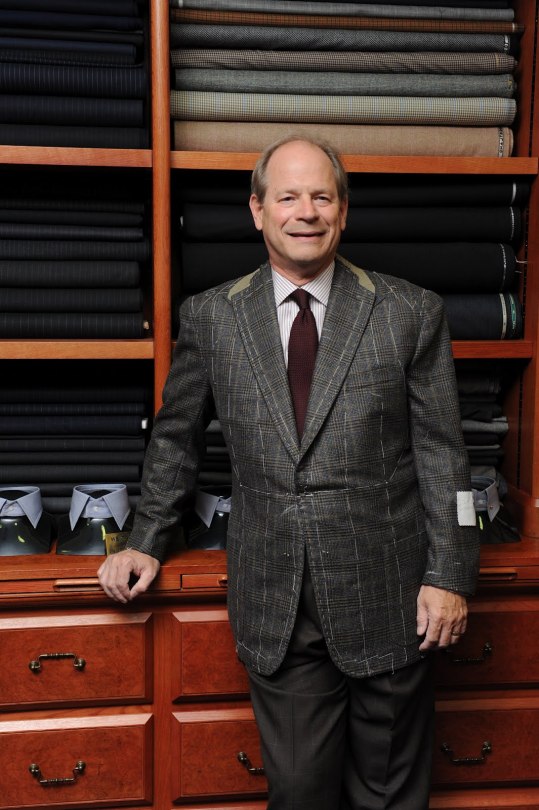
For one, many bespoke tailors – including those on Savile Row – use block patterns, which means they’re not really drafting something from scratch. Simon also talks about how a salesperson is often your fitter in MTM, but that’s not uncommon in bespoke either (especially for traveling operations). Ideally, your cutter should be present at your fittings – as that’s how you iron out any difficulties in fit – but that’s not always an option that’s available to you.
And what about the different ways companies can handle production? In Hong Kong, for example, a single person can see your jacket through from start to finish, whereas in Western Europe, the process is broken up between cutters, coatmakers, and tailors. Plus, whereas tailoring houses typically offer three fittings as standard, some of the best in the world skip the basted and go straight to forward.
Add to this the different crafts – shirtmakers, cordwainers, tie makers, and bespoke leathercrafts people – and suddenly you see there’s a lot of variation. Many bespoke shirtmakers and cordwainers won’t give fittings, and nobody would fault a bespoke tie maker for using a pre-drafted pattern (I hope).
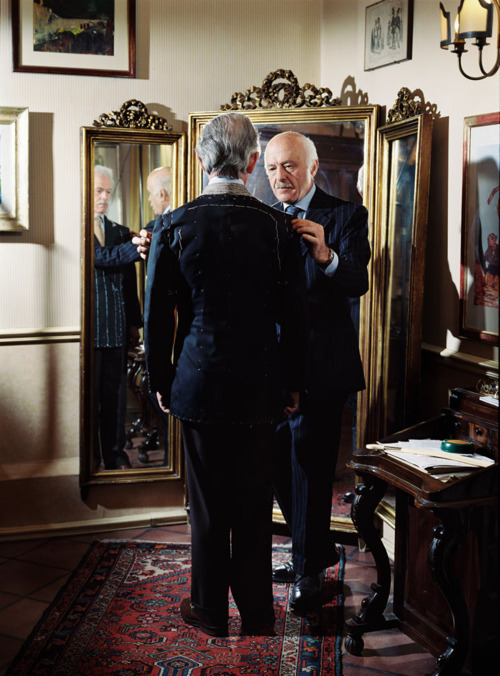
For me, the best way to understand bespoke is to think of it as the highest level of customization – in a long continuum where MTO and MTM exist. Putting strict definitions on it (e.g. your fitter has to be your cutter, there must be three fittings, or the pattern has to be drafted from scratch) doesn’t get to the heart of things. Bespoke is less about what it is, and more about it is not. It’s not ready-to-wear, made-to-order, or made-to-measure. Those things came much later and are easier to define. Bespoke is simply how things were made before the advent of factory production.
Which is why I think of bespoke as the box pictured at the top of this post. Inside are two sport coats made for me a couple of years ago. The box is going back to Steed, one of my tailors, for some minor adjustments. That kind of service – the ability to customize small things that otherwise can’t be handled locally – speaks more about the value of bespoke than minutia aboutpattern drafting (which, incidentally, Steed creates freehand). Bespoke should be thought of as a total service to help you get certain nuances right that you might not be able to achieve off-the-rack or made-to-measure. That’s helpful if you’ve ever fussed over details.
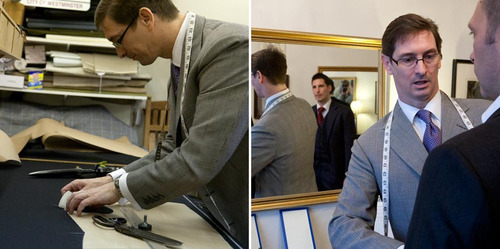
Some friendly suggestions if you’re interested in custom clothes:
- Care less about the distinctions between bespoke and made-to-measure, and think about concrete services. Can the company make the kind of garment you want? Can they account for nuances in fit, such as asymmetrically sloped shoulders or a slightly hunched back? My friend David has a nice post explaining what good, custom tailoring should give you.
- Ask if your cutter will be at your fitting. Bespoke, made-to-measure, or otherwise, I’m wary of companies that rely on salespeople for fittings. And be aware that salespeople will sometimes call themselves tailors, even if they’ve never drafted a pattern in their life. A tailor is not necessarily a cutter; and a cutter is not necessarily your cutter.
- That said, a salesperson sometimes has a better stylistic eye than your average cutter. Nice if you can get both at your fitting, but if you have to choose, stay close to the latter. Doing so helps ensure you’ll get the best fit.
- Don’t stray too far from the company’s house style. You’re much more likely to get something you like that way. Again, David has a nice post that analogizes custom tailors to personal chefs (which is helpful even if you, like me, have never had a personal chef).
- Aim for a long-term relationship. You’re better off asking for changes in subsequent commissions than micromanaging a single order throughout the entire process. Think of improvements as an iterative process, rather than just getting the perfect item right off-the-bat.
- Relatedly, leave the fittings to the tailor. It’s hard to tell what a jacket will look like when it’s half-made in stages. Be clear about what you want and leave the fittings to the tailor, who should know what to do. If you feel you need to micromanage the fittings, maybe you should choose a new tailor.
- Wear something for a while before deciding how you feel about it. When a tailor says “let it settle,” sometimes that’s more about letting your opinion settle than the garment. Give the jacket a chance and see if the details grow on you before making changes to new orders.
- If you really don’t like your first commission, don’t go back. Lots of people go back after a bad first commission, assuming subsequent orders will be markedly better. This is often just throwing good money after bad.
- Don’t discount RTW, MTO, or MTM. The biggest mistake, I think, is assuming that you’ll automatically get a better garment as you “climb up” the custom clothingpyramid. I’ll take good RTW over bad MTM, and good MTM over bad bespoke. Focus on fit and styling instead of ideas about luxury. For good RTW, I like Formosa (who also offers MTO and MTM). Additionally, my tailor Steed offers MTM at prices lower than their bespoke.
